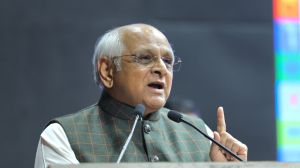From Down Under, comes an offer to top up your rupee
Five years after their offer was first rejected, the Australian government is back knocking on New Delhi’s door—with technology to...

Five years after their offer was first rejected, the Australian government is back knocking on New Delhi’s door—with technology to upgrade your soiled, worn-out, defaced rupee note. And replace them with ‘‘anti-crumple polymer-based’’ notes, the kind it has supplied to over 20 countries, including China, Nepal and Bangladesh.
This week, in meetings in South Block, Australian Foreign Secretary Ashton Calvert offered the polymer-note technology, jointly developed by Reserve Bank of Australia (RBA) and a Belgium-based firm, UCB. A senior official told The Sunday Express that the Australian delegation was told to get back with a ‘‘firm proposal.’’
This isn’t the first time. In 1999—one year after Pokharan II when India-Australia relations were in deep chill—the Australians directly approached the Reserve Bank of India (RBI) with the same technology but the latter turned it down after a technical committee of the Finance Ministry cited ‘‘security reasons’’ claiming that the polymer notes could be easily counterfeited.
However, the Australian experience is different. Note Printing Australia, a wholly owned subsidiary of RBA, introduced polymer notes in that country way back in 1988 and found that the new notes greatly reduced counterfeiting activity.
No wonder that the polymer notes are now being used by countries from Zambia to Papua New Guinea (see box). It is understood that by controlling the transparency of the polymer surface, several security features can be incorporated. For example, the Australian five-dollar note uses a window containing with a screen for identifying the hidden ‘5’ in the background. New Zealand also uses similar security feature.





- 01
- 02
- 03
- 04
- 05


























